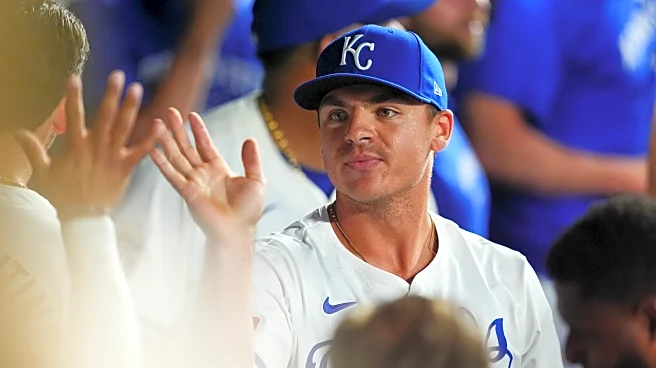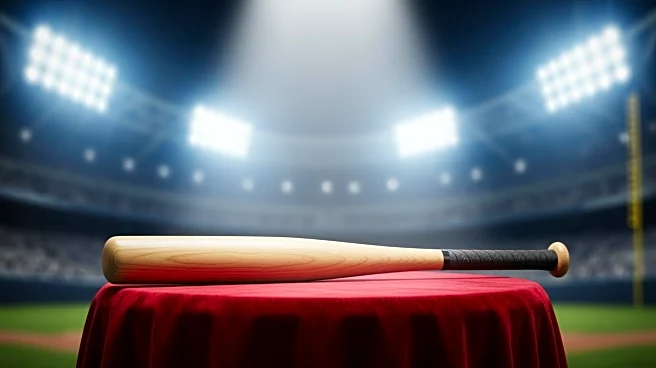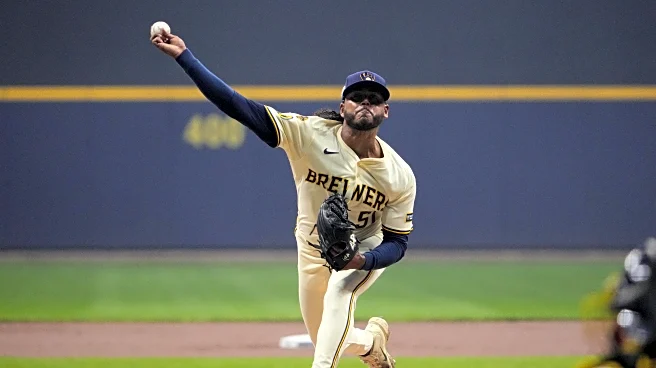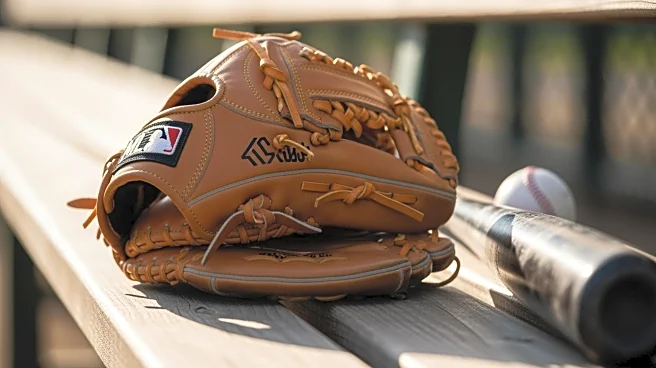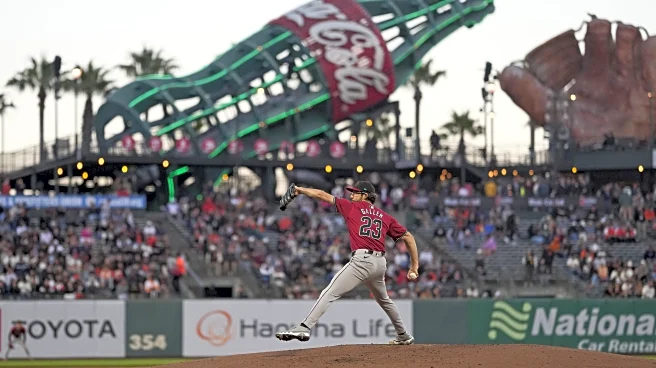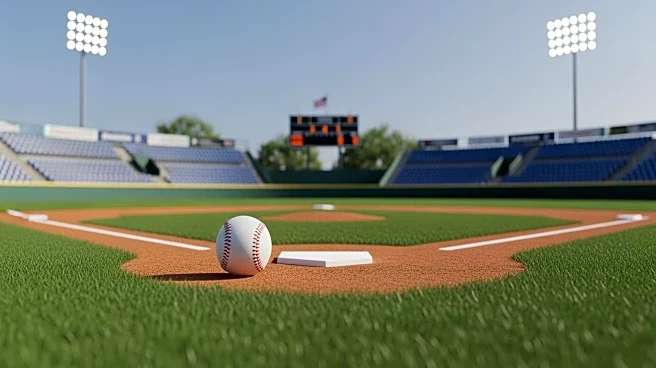Bold Predictions
Paul Dietrich: The Brewers have three outfielders in the All-Star Game
To be fair, I didn’t really buy this when I made this prediction in March, BUT: I was pretty wrong. The Brewers did have three All-Stars,
but they were all pitchers (Trevor Megill, Freddy Peralta, and Jacob Misiorowski). Christian Yelich was at least in the conversation, and there were times when Jackson Chourio looked like an All-Star, but I was way off on Garrett Mitchell, who underperformed before season-ending shoulder surgery in June. This prediction may not have been a joke if I’d said Sal Frelick in place of Mitchell, but… I didn’t.
Harrison Freuck: The Brewers finish the year with the best rotation in the NL Central
I think this ended up correct, right? The Brewers’ rotation ended the year with Freddy Peralta, Quinn Priester, Brandon Woodruff (until another injury), Jose Quintana, Chad Patrick, and Jacob Misiorowski. Maybe not who I would have predicted going into the year, but it was by no means a bad rotation. Looking elsewhere in the division, the Reds were probably the biggest competition with Hunter Greene, Nick Lodolo, and Andrew Abbott. The Pirates obviously have Paul Skenes, the Cubs were good, not great, and the Cardinals definitely make up the back of the division. The numbers are there to support this, too, as Milwaukee finished with the third-best ERA by starters in the league at 3.56 (behind only the Rangers and Phillies).
Matt Gerrity: Rhys Hoskins improves from a solid-but-not-impressive first season
This doesn’t look so great now, does it? After predicting a 30-plus homer season, Hoskins actually got replaced by Andrew Vaughn thanks to a mid-season injury. Hoskins’ improvement was marginal at best, bumping up from a 101 wRC+ to 109 wRC+, but almost all of his production came in the first two months of the season. From May 1 onward, Hoskins hit only .216 with a worrisome 31.7% strikeout rate.
Jason Paczkowski: Christian Yelich gets back to the 30-homer mark
This one was extremely close. Yelich hit his 29th home run on September 16 and needed just one in the last couple of weeks to reach 30. However, a cold end to the season (and postseason) kept him from hitting that mark. Unfortunately, that cold end to the regular season and postseason was a big black mark on an otherwise great season.
Adam Zimmer: Chourio finishes in the top three in NL MVP voting
Yeah, about that…
The three NL MVP finalists:
Shohei Ohtani: 7.7 WAR, .282 BA, 172 H, 55 HR, 146 R, 102 RBI, 1.014 OPS // 14 GS, 47.0 IP, 62 K, 2.87 ERA, 179 OPS+
Kyle Schwarber: 4.7 WAR, .240 BA, 145 H, 56 HR, 111 R, 132 RBI, .928 OPS, 150 OPS+
Juan Soto: 6.2 WAR, .263 BA, 152 H, 43 HR, 120 E, 105 RBI, .921 OPS, 160 OPS+
& Jackson Chourio: 2.2 WAR, .270 BA, 148 H, 21 HR, 88 R, 78 RBI, .770 OPS, 112 OPS+
So, definitely not a top-3, 5, or 7 MVP candidate if you’re going by WAR, OPS, OPS+, or HRs. The BBWAA tends to consider those things. I’d argue that Chourio’s ceiling is a top-three MVP candidate, but he still has a ways to go. The 21-year-old outfielder struck out 20.5% of the time, which is 0.6% less than last year and sits around MLB’s average. That doesn’t mean his plate discipline passes the eye test, which it often doesn’t.
Regardless, we got glimpses — in both the regular season and playoffs — of what Chourio is capable of in the field and at the plate. My prediction for next year might not be this bold, but I wouldn’t be surprised if he took a significant third-year leap.
Storylines to Watch
Paul Dietrich: Does someone in the minor leagues end up as a high-leverage rotation option?
The name I was of course thinking of when I wrote this was that of Craig Yoho, who decidedly did not emerge into a major league high-leverage option. But I also talked about Jacob Misiorowski, and while Miz did most of his pitching out of the starting rotation, he did end up being an important contributor for the Brewers. While I’m not sure I’d describe his postseason work as “high-leverage relief,” he certainly was a major option in important moments for the postseason Brewers.
Harrison Freuck: Do Brice Turang and Joey Ortiz remain at second base and shortstop, respectively?
The answer was very clearly yes, but should they have? Turang had his best season (at least offensively) by a large margin, while Ortiz took a step back from what was a decent rookie year. The Brewers may very well look for some stopgap help at shortstop (or second or third, if they want to explore moving Turang or Caleb Durbin over) while the team’s top prospects develop. While Ortiz had the starting job all season at short, that was primarily due to his defensive value. Don’t be surprised if he isn’t standing there on Opening Day next season.
Matt Gerrity: Will there be enough production from the bottom of the lineup?
The answer to this is a resounding “yes,” at least as far as the regular season goes. Sal Frelick, Jake Bauers, Caleb Durbin, Isaac Collins, and Andruw Monasterio are all examples of players who spent a significant portion of the season in the bottom half of the lineup and all finished with an OPS of at least .720. While the lineup didn’t carry over that production into the postseason, it was enough to build one of the most potent offenses in baseball over the course of the regular season.
Jason Paczkowski: Can the Brewers’ infield stabilize following Willy Adames’ departure?
A couple of weeks into the season, third base was a mess. Vinny Capra and Oliver Dunn split time at third base, and neither looked good. With the Brewers in need of a boost, they brought up Caleb Durbin after 19 games. He was exactly what was needed and started 119 of the Brewers’ remaining 143 games at third. Other than a short platoon experiment with Anthony Seigler (which didn’t make much sense at all), he was rock solid for the infield.
Meanwhile, Joey Ortiz made 140 starts at shortstop this season. While his defense shone, his offense was terrible. Other than a short hot streak in the middle of the season, he was a liability in the lineup. His strong defense was still enough to give him positive value by fWAR, and the Brewers will have to decide if that’s enough going into 2026.
Adam Zimmer: The Brewers’ final infield spot
I think I nailed this one. Third base was a question mark as recently as the trade deadline, as a not-so-insignificant contingent of Brewers fans called for the Brewers to upgrade at third base. Two of the players I highlighted — Caleb Durbin and Andruw Monasterio — played an important role in the Brewers’ success this season. Durbin, in particular, was probably Milwaukee’s biggest breakout this season (and had the best NLCS of any Brewers position player). From March:
I’m excited to see who ends up becoming the everyday third infielder (not counting first base). I’d love for one of them to prove they could be a long-term option.
Durbin has proven just that.
Joey Ortiz (0.3 bWAR, 66 OPS+) had a rough season at the plate; I’d argue that if any infield spot isn’t safe heading into next season, it’s his, although he does provide significant value with his glove. Maybe the Brewers shuffle Durbin around the infield, but he should play a major role next year.
Team MVP
Paul Dietrich: William Contreras
I thought there was a legitimate shot that Contreras could, if not necessarily win an MVP, be a serious candidate for one. My reasoning still makes sense to me, but Contreras’ finger fracture seems to have contributed to his slow start, and while he finished with a perfectly solid season, he was not remotely close to the MVP conversation.
Harrison Freuck: Freddy Peralta
Peralta was almost certainly Milwaukee’s MVP this season, providing stability in a rotation that faced plenty of injuries throughout the season. He made a career-high (and team-high) 33 starts with a 2.70 ERA, 3.64 FIP, 204 strikeouts, and an NL-best 17 wins across 176 2/3 innings. While he wasn’t named a finalist for the NL Cy Young Award, he’ll certainly garner some votes for the first time in his career and may even finish in the top five.
Matt Gerrity: Christian Yelich
My prediction was based on Yelich’s incredible 2024 season before he was forced off the field from injury. Despite the worries about his back surgery, he proved more than capable of still being a potent bat. Even with 29 home runs, however, his production ranked similarly to Turang. Yelich had a .795 OPS and a 121 wRC+, compared to Turang’s .794 OPS and 124 wRC+. Once you add Turang’s defensive value, it’s a clear win for Turang, though. In total, because Yelich was essentially the full-time DH, he only ranked sixth among qualified Brewers hitters in WAR.
Jason Paczkowski: William Contreras
It was a tough task for Contreras to repeat his 2024 performance, and unfortunately, he did take a small step back. His numbers on offense were down a little, but he was still reliable for 128 starts at catcher in 2025 (150 overall). He had the second-highest fWAR on offense, so it was a great season, just not an MVP season.
Adam Zimmer: Jackson Chourio
I was a big believer in Chourio ascending to superstardom. While he had a good season, he didn’t even put up half the bWAR of Brice Turang (5.6). William Contreras (3.9), Christian Yelich (3.1), and Sal Frelick (3.0) also outpaced him in WAR. With that being said, Chourio does have a higher ceiling than any of those guys — with the possible exception of Turang. Turang seemed to find his power stroke in the second half of the season, earning August’s NL Player of the Month award in the process. If he hits like he did in August while playing defense like he did in 2024? That’s a legitimate MVP candidate.
Most Improved Player
Paul Dietrich: Sal Frelick
I explained before the season that I clung to belief in Frelick’s offensive abilities beyond the point where it was perhaps wise, and this was the last season in which I was going to be legitimately hopeful of a Frelick breakout.
“Breakout” might be strong, but Frelick had a very solid offensive season. He flirted with a .300 batting average for most of the season (and thus was in the conversation for the NL batting title) and finished at .288/.351/.405. He hit 12 homers, nine more than in either of his previous MLB seasons. A 111 OPS+ isn’t going to blow anyone away, but it’s a major improvement and suggests that Frelick can, at minimum, be a useful offensive contributor.
Harrison Freuck: Garrett Mitchell
A swing and a miss. Mitchell, of course, continued to face injury problems in 2025, though he wasn’t even all that good for the short time he was healthy. Across 78 plate appearances (25 games), he batted just .206/.286/.294 with no homers, three RBIs, nine runs, and three steals. The former first-round pick is now a non-tender candidate this fall.
Matt Gerrity: Brice Turang
This was another exemplary season from Turang after making a substantial improvement in his second season. It’s not often that a player bumps up his OPS by around .100 points every season. After a .665 OPS last year, his .794 OPS in 2025 made him one of the most versatile, well-rounded players in the sport. He came close to notching his first 20 HR-20 SB season, as well.
Jason Paczkowski: Rhys Hoskins
Through the first half of the season, Hoskins was looking better. His numbers were better, and he was providing good value at first base. However, a sprained left thumb put him on the IL for two months, and when he came back, Andrew Vaughn and Jake Bauers had completely taken over at first base. He only got one more start at DH after he returned, and was not on the postseason roster.
Adam Zimmer: Rhys Hoskins
Hoskins did put up 1.1 WAR more than last season in 41 less games. I also could not have seen Andrew Vaughn coming. Still, Hoskins got Wally Pipped and was eventually left off both the NLCS and NLDS rosters. Bad take. Enough said.
Newcomer of the Year
Paul Dietrich: Craig Yoho
Yeah, I was wrong. I still have hopes that Yoho, who failed to gain Pat Murphy’s trust due to wildness but has thrown fewer than 10 innings in the major leagues, will earn a real role next season. But I thought he was going to recreate his minor-league success immediately upon reaching the majors, and that did not happen. (I also thought Nestor Cortes would lead Brewer newcomers in total value. Oops.)
Harrison Freuck: Nestor Cortes
Another bad take. Cortes made just two starts for Milwaukee, with arguably the worst start of his career to open the season against the Yankees, his former team. He bounced back for a solid outing against the Reds, but he then went on the IL, and we never saw him in a Brewers uniform again, as he was shipped out to San Diego at the trade deadline. There were plenty of better options here, including a pair of midseason additions in Quinn Priester and Andrew Vaughn, but who would have seen them coming?
Matt Gerrity: Nestor Cortes
Oof. If only I had picked Durbin, Cortes’ partner in this trade! My argument for Cortes’ value came from his xERA sitting at 3.62 or better for four straight seasons. Yet when he got to Milwaukee, his ERA finished at 9.00 over eight innings. Rather than being a valuable pitcher providing stability and consistency, Cortes barely played for Milwaukee.
Jason Paczkowski: Jacob Misiorowski
Back in the preseason, I predicted a June breakout for Misiorowski, and that’s exactly what happened. He entered the league strong enough to earn an All-Star selection after just six starts. He cooled down after the All-Star Break, partially due to a left tibia contusion that put him on the IL for a couple of weeks. It was good enough to earn a postseason roster spot, where he shone once again. He wasn’t the newcomer of the year; that goes to either Quinn Priester or Caleb Durbin. He was still a breakout star for the Brewers.
Adam Zimmer: Craig Yoho
Yoho was the Nashville Sounds’ best reliever (0.94 ERA, 60 K in 47.2 IP) this year, but had a 7.27 ERA in limited time with the Brewers. His changeup is one of the best individual pitches in the individual farm system, but his secondary pitches lack the shape and velocity to effectively play off said changeup. This might explain his struggles with command in his time with the big club. Still, I believe in the Pitching Lab — if Yoho finds a second pitch that can get him outs in the big leagues, it’s over.


